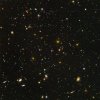Wysiwyg
Everyone wants money
- Joined
- 8 August 2006
- Posts
- 8,428
- Reactions
- 284
This thread is for any pictures or articles on universal events. I have an article on a supernova to start it. With a link to the site.
http://www.technewsworld.com/rsstory/57291.html
"The death of a star in a galaxy some 240 million light years away produced the brightest supernova ever viewed. The star is thought to have been massive -- more than 100 times the weight of our own sun. The first generation of stars were similarly massive, astronomers believe, so this new supernova may provide a rare glimpse at how the first stars died".
I was thinking that as the earths sun reduces in mass then we would be drawn closer. The forces keeping all the stars moons suns etc. the same distance apart are massive hey.
http://www.technewsworld.com/rsstory/57291.html
"The death of a star in a galaxy some 240 million light years away produced the brightest supernova ever viewed. The star is thought to have been massive -- more than 100 times the weight of our own sun. The first generation of stars were similarly massive, astronomers believe, so this new supernova may provide a rare glimpse at how the first stars died".
I was thinking that as the earths sun reduces in mass then we would be drawn closer. The forces keeping all the stars moons suns etc. the same distance apart are massive hey.







 , i.e. the big bang expansion is so well quantified that they measure distance by the speed at which the object is moving away from us ( making things appear a fraction redder) etc
, i.e. the big bang expansion is so well quantified that they measure distance by the speed at which the object is moving away from us ( making things appear a fraction redder) etc








